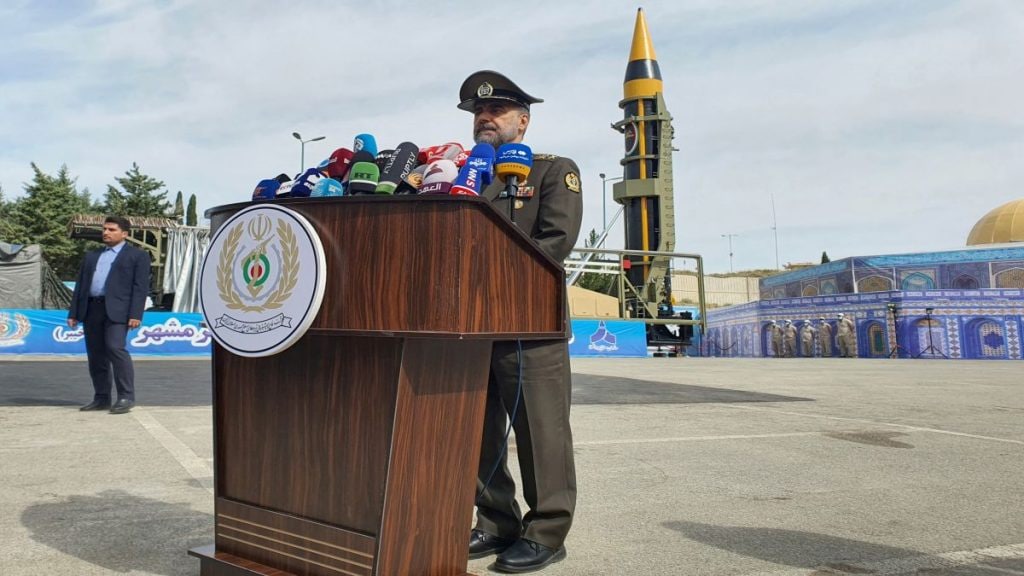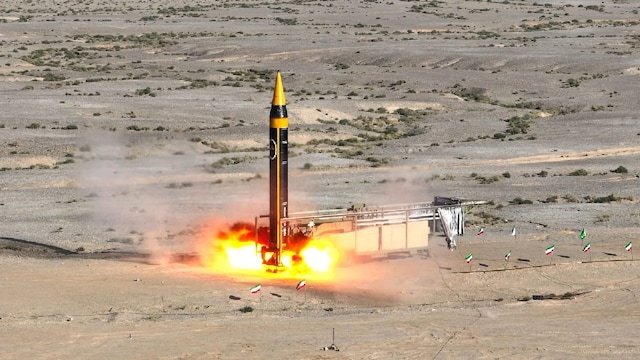In retaliation for America’s strikes targeting Iran’s nuclear sites, Tehran launched the Khorramshahr-4 missile against Israel. Also known as the Kheibar missile, it is the country’s biggest rocket, with a range of 2,000 km and the capability of carrying multiple warheads of up to 1,800 kg
read more
Things are really hotting up now. Hours after the United States struck three nuclear facilities that are the heart of Tehran’s nuclear ambitions, Iran struck back by launching wave of missiles towards Israel.
Eighty-six people have been rushed with injuries following Iran’s air strikes, which targeted the Ben Gurion airport, a “biological research centre”, logistics bases and various layers of command and control centres. IRNA news agency said 40 missiles were fired in the “20th wave” of Iranian strikes.
Speaking on the damage incurred, Tel Aviv Mayor Ron Huldai told AFP, “Houses here were hit very, very badly. Those who were in the shelter are all safe and well. The damage is very, very extensive, but in terms of human life, we are okay.”
More from Explainers
Iran’s paramilitary Revolutionary Guard (IRGC) said that among the many missiles used in the wave of strikes was the deadly Khorramshahr-4 missile, which is also called Kheibar, after a Jewish fortress conquered by the Muslims in the 7th century — in what is now Saudi Arabia.
Here’s what we know about this missile and how dangerous it can be.
1) The Khorramshahr-4 missile is an Iranian liquid-fuelled, medium-range ballistic missile developed by Iranian state-owned defence company Aerospace Industries Organisation (AIO).
2) The Khorramshahr-4 missile was first test fired in January 2017, and publicly displayed at a September 2017 military parade in Tehran. A variant of Khorramshahr with a smaller and lighter re-entry vehicle than the previous version was paraded in Tehran in September 2019.
Editor’s Picks
3) Some defence experts note that the Khorramshahr-4 missile, also known as the Kheibar missile, is derived from North Korea’s Hwasong-10 intermediate-range ballistic missile (IRBM), which in turn is a modified version of the outdated Soviet R-27 (SS-N-6) submarine-launched ballistic missile (SLBM).
4) However, there are distinct differences between Iran’s missile and the North Korean weapon. The Khorramshahr-4 missile, measuring 13 metres in length is larger than North Korea’s Hwasong. Also, unlike the Hwasong-10, the Khorramshahr does not have grid fins. Its guidance equipment is housed in separate compartment above the tanks.

5) This missile can reach Mach 16 outside the atmosphere and Mach 8 during re-entry, making it a high speed threat.
6) According to Iranian officials, the missile has a range of 2,000 km and is capable of carrying multiple warheads of up to 1,800 kg. However, some analysts note that the range may be much higher — reaching 2,500 km.
7) This missile is also capable of striking 80 targets upon reaching the target area. The warhead detaches at the last stage of flight and hits its targets with pinpoint accuracy at a high speed, hindering enemy air defence systems from detecting, tracking, or effectively engaging the missile to intercept it.
8) Analysts note that the Khorramshahr-4 missile poses a real threat to Israel’s air defence systems; the Jewish nation’s Iron Dome is unable to intercept it. The David’s Sling system might stand a better chance, but would also experience difficult in defending the missile. According to a National Interest report, the Arrow Two and Arrow Three high-altitude interception systems would be the most effective, but would struggle to knock down multiple warheads deployed from the Khorramashahr-4 as they make their way to the targets below.















